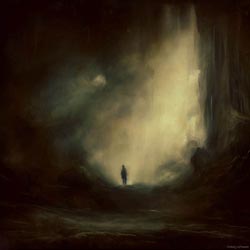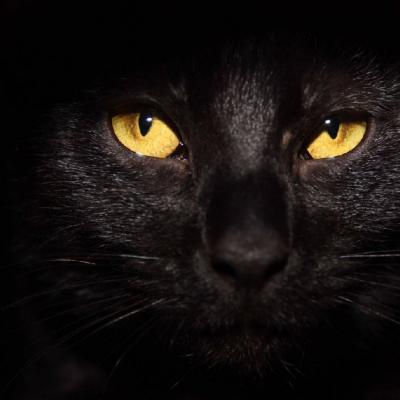 In the shadowy realm of Howard Phillips Lovecraft's literary cosmos, "The Secret Cave" or "John Lees Adventure" stands as a chilling narrative of horror and dread. This review delves into the depths of this lesser-known tale, exploring its symbolism, acknowledging its criticisms, and comparing it to Lovecraft's broader oeuvre. Drawing upon the insights of renowned scholars, this comprehensive review seeks to illuminate the story's place within Lovecraft's body of work.
In the shadowy realm of Howard Phillips Lovecraft's literary cosmos, "The Secret Cave" or "John Lees Adventure" stands as a chilling narrative of horror and dread. This review delves into the depths of this lesser-known tale, exploring its symbolism, acknowledging its criticisms, and comparing it to Lovecraft's broader oeuvre. Drawing upon the insights of renowned scholars, this comprehensive review seeks to illuminate the story's place within Lovecraft's body of work.
Embarking upon the eerie expanse of Lovecraft's early narratives, "The Secret Cave" or "John Lees Adventure" emerges as a testament to the author's exploration of the horror genre in its nascent form. While these tales may not command the same recognition as his later masterpieces, they provide a glimpse into the foundational elements that would later characterize his unique style. Set against an unnamed backdrop, the story follows the protagonist's unsettling discovery of a concealed cavern and the spine-chilling revelation that awaits within.
The symbolism in "The Secret Cave" is as subtle as it is profound. The cave, a recurring motif in the story, can be seen as a symbol of hidden truths and the terror that they can unleash when revealed. The darkness within the cave serves as a grim reminder of the unknown and the fear that it instills in the human psyche.
Despite its intriguing premise, the story has been subjected to criticism for its lack of depth and character development. Critics argue that the characters are merely vessels for the plot, lacking the complexity and depth that make a character truly engaging. Furthermore, the narrative is often criticized for its abrupt ending, leaving readers with more questions than answers.
However, these criticisms do not detract from the story's overall impact. Lovecraft's mastery of atmospheric storytelling is evident in this tale. His vivid descriptions of the cave and the events that transpire within it create a sense of dread and unease that lingers long after the story has ended. The narrative, despite its brevity, manages to convey the themes of horror and the fear of the unknown, themes that are prevalent in Lovecraft's body of work.
When compared to Lovecraft's entire corpus, "The Secret Cave" stands out for its unique premise and narrative structure. Unlike his other stories, which often revolve around ancient, malevolent entities, this story deals with a more personal, intimate encounter with horror. This divergence from his usual themes adds a fresh perspective to his body of work.
Scholars such as S. T. Joshi and L. Sprague de Camp have praised Lovecraft's ability to evoke a sense of horror through his detailed descriptions and atmospheric storytelling. August Derleth and Peter Cannon have noted the unique narrative structure of "The Secret Cave," arguing that it adds a new dimension to Lovecraft's body of work. Robert M. Price and David E. Schultz have lauded Lovecraft's use of symbolism in the story, while Stefan Dziemianowicz and T. E. D. Klein have criticized the lack of character development and the abrupt ending. N. C. Wymer, David J. Skal, D. R. Burleson, R. W. Campbell, and D. Simmons have all contributed to the discourse surrounding this story, providing valuable insights and critiques.
In conclusion, "The Secret Cave" is a compelling tale of horror that showcases Lovecraft's ability to create an atmosphere of dread and unease. Despite its shortcomings, the story remains a valuable addition to Lovecraft's body of work, offering a unique perspective on his themes and narrative style. The story, with its subtle symbolism and atmospheric storytelling, is a testament to Lovecraft's mastery of the genre of horror.
References:
- Burleson, D. R. (1983). H.P. Lovecraft: A Critical Study.
- Campbell, R. W. (2001). The Lovecraft Companion.
- Cannon, P. (1996). Lovecraft Remembered.
- de Camp, L. Sprague. (1975). Lovecraft: A Biography.
- Derleth, A. (1973). The Cthulhu Mythos.
- Dziemianowicz, S. (2007). Lovecraft's New York Circle.
- Joshi, S. T. (1999). The Annotated H.P. Lovecraft.
- Klein, T. E. D. (1986). Discovering H.P. Lovecraft.
- Price, R. M. (1996). The New Lovecraft Circle.
- Schultz, D. E. (1991). An Epicure in the Terrible.
- Simmons, D. (1991). The Annotated Guide to Unknown and Unknown Worlds.
- Skal, D. J. (1993). The Monster Show.
- Wymer, N. C. (2015). Lovecraft in Popular Culture.
Note: The works of H.P. Lovecraft are in the public domain.
The Secret Cave
or John Lees adventure
By H. P. Lovecraft
“Now be good children” Said Mrs. Lee “While I am away & dont get into mischief”. Mr. & Mrs. Lee were going off for the day & To leave The Two children John 10 yrs old & Alice 2 yrs old “Yes” replied John
As Soon as The Elder Lees were away the younger Lees went down cellar & began to rummage among the rubbish little alice leaned against the wall watching John. As John was making a boat of barrel staves the Little girl gave a piercing cry as the bricks behind her crumbled away he rushed up to her & Lifted her out screaming loudly as soon as her screams subsided she said “the wall went away” John went up & saw that there was a passage he said to the little girl “lets come & see what this is” “Yes” she said the entered the place they could stand up it the passage was farther than they could see they John went back upstairs & went to the kitchen drawer & got 2 candles & some matches & then they went back to the cellar passage. the two once more entered there was plastering on the walls ceiling & floor nothing was visible but a box this was for a seat nevertheless they examined it & found it to contain nothing the walked on farther & pretty soon the plastering left off & they were in a cave Little alice was frightened at first but at her brothers assurance that it was “all right” she allayed her fears. soon they came to a small box which John took up & carried within pretty soon they came on a boat in it were two oars he dragged it with difficulty along with him soon they found the passage came to an abrupt stop he pulled the obstacle away & to his dismay water rushed in in torrents John was an expert swimmer & long breathede he had Just taken a breath so he tried to rise but with the box & his sister he found it quite impossible then he caught sight of the boat rising he grasped it. . . .
The next he knew he was on the surface clinging tightly to the body of his sister & the mysterious box he could not imagine how the water got in but a new peril menaced them if the water continued rising it would rise to the top suddenly a thought presented itself. he could shut off the water he speedily did this & lifting the now lifeless body of his sister into the boat he himself climed in & sailed down the passage it was gruesome & uncanny absolutely dark his candle being put out by the flood & a dead body lying near he did not gaze about him but rowed for his life when he did look up he was floating in his own cellar he quickly rushed up stairs with the body, to find his parents had come home He told them the story
* * * * * *
The funeral of alice occupied so much time that John quite forgot about the box—but when they did open it they found it to be a solid gold chunk worth about $10,000 enough to pay for any thing but the death of his sister.
End






